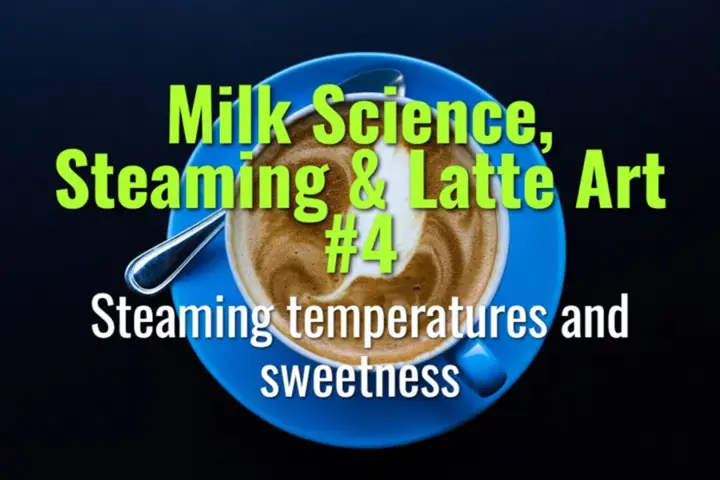Steaming temperatures and sweetness
How milk steaming temperature affects sweetness, texture, and overall drink quality.
- Coffee Basics Nerds
- 2 min read

Temperature Ranges and Effects
-
Cold to 40 °C (104 °F):
-
Stretching phase, air incorporation.
-
Milk tastes flat, no sweetness yet.
-
40–55 °C (104–131 °F):
-
Proteins begin denaturing, stabilizing microfoam.
-
Lactose perception increases, sweetness begins to rise.
-
55–65 °C (131–149 °F):
-
Optimal range for sweetness and texture.
-
Milk tastes naturally sweet, velvety, and rich.
-
Microfoam integrates well with espresso for latte art.
-
65–70 °C (149–158 °F):
-
Sweetness plateaus.
-
Foam begins to lose stability.
-
Risk of scalding proteins, leading to a flat or chalky taste.
-
Above 70 °C (158+ °F):
-
Proteins break down excessively, foam collapses.
-
Lactose doesn’t caramelize (unlike sucrose) → instead milk tastes cooked, dull, or bitter.
Sweetness Perception
- Steaming enhances perceived sweetness by unfolding whey proteins, which interact with lactose.
- Sweetness is a sensory perception rather than actual sugar increase.
Practical Tips
- Use a thermometer or learn by touch: pitcher base becomes too hot to hold comfortably at ~60 °C.
- Stop steaming at 55–60 °C to allow carryover heat to finish at 60–65 °C.
- Train consistency by using both sensory cues (sound, touch) and thermometers during practice.
Summary
Milk tastes sweetest and has the best microfoam texture at 55–65 °C (131–149 °F). Above this range, sweetness perception declines, foam destabilizes, and milk develops cooked flavors. Mastering temperature control is key to delicious milk-based espresso drinks.